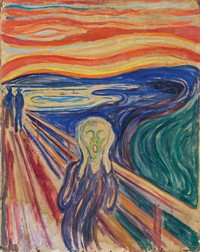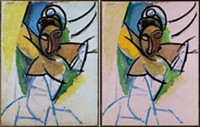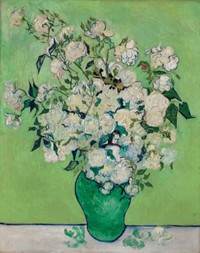Advertisement
Grab your lab coat. Let's get started
Welcome!
Welcome!
Create an account below to get 6 C&EN articles per month, receive newsletters and more - all free.
It seems this is your first time logging in online. Please enter the following information to continue.
As an ACS member you automatically get access to this site. All we need is few more details to create your reading experience.
Not you? Sign in with a different account.
Not you? Sign in with a different account.
ERROR 1
ERROR 1
ERROR 2
ERROR 2
ERROR 2
ERROR 2
ERROR 2
Password and Confirm password must match.
If you have an ACS member number, please enter it here so we can link this account to your membership. (optional)
ERROR 2
ACS values your privacy. By submitting your information, you are gaining access to C&EN and subscribing to our weekly newsletter. We use the information you provide to make your reading experience better, and we will never sell your data to third party members.
Analytical Chemistry
Incredible Colors
Scientific investigations unmask the secrets of 16th-century Venetian painters' palettes
by Lois R. Ember
September 11, 2006
| A version of this story appeared in
Volume 84, Issue 37

The eye sees the glowing, luscious colors of the early-16th-century Venetian masterpieces by Giovanni Bellini, Giorgione, and Titian and their contemporaries. But it takes science to explain how these colors came to be and how the masters used them.
Scientific analysis and historical research reveal that Venetian artists of this period were such skilled colorists because they borrowed materials and techniques lavishly from artisans in various trades. These exchanges were possible, even encouraged, because artists were part of a larger "industry of color" that flourished in Venice at this time.
David A. Brown, curator of the exhibition "Bellini, Giorgione, Titian, and the Renaissance of Venetian Painting" at the National Gallery of Art in Washington, D.C., calls the years between 1500 and 1530 the Golden Age of Venetian art, a period that roughly corresponds to the High Renaissance on the Italian mainland.
From this three-decade period, the curators have put together an exhibit that abounds in well-known and beloved masterpieces, including Bellini's "Feast of the Gods," Giorgione's "Three Philosophers," and Titian's "Concert Champêtre," which has traveled to the U.S. for the first time.
But the exhibit is more than a dazzling display of paintings. It is the culmination of a joint effort by the National Gallery and the Kunsthistorisches Museum in Vienna to conserve the Venetian paintings in their collections and, through research, to better understand how they were made. Through conservation and conservation science, the two museums set about learning what painting techniques and materials the masters used.
During Venice's Golden Age, artistic innovation and experimentation flourished despite warfare and disease. Giorgione, for instance, is thought to have succumbed to the plague when he was in his mid-thirties, bringing the career of an innovative and influential artist to an early end. That great works of art could be produced in such turbulent times was testimony to Venice's wealth, its lucrative trade with Northern Europe, and its stable government.

The artists of the exhibition's title and their contemporaries innovated by playing with light and mood, reality and allegory, the sacred and the secular. They reinterpreted traditional religious subjects and ushered in pastoral landscapes, beguiling women, and dramatic, large-scale portraits.
Most important, they dared to expand their palette of colors. Indeed, they built their reputations and demand for their oil paintings on the scaffolding of new pigments that were produced by borrowing materials from other trades—glassmaking, ceramics production, and textile dyeing-that were also booming. With the new colors, light became golden and sometimes palpable. Textiles were brilliantly colored. Flesh became radiant and provocative.
This cross-fertilization of painters' colors by materials used by other artisans was possible because of the existence of an industry of color. Fine artists along with glassmakers, potters, textile dyers, pigment manufacturers, and color sellers, or vendecolori, were all part of this industry.
Venetian color sellers were specialists who sold to artists and artisans various colorants—materials that could be used to add color to any medium or object—as well as materials that could be used to extract, process, and apply colorants. They also appeared to have dealt with colorants and associated materials at the wholesale level. The range and variety of their stock of supplies grew significantly as the 16th century progressed.
As National Gallery senior conservation scientist Barbara H. Berrie explains, color sellers—unique to Venice at the time—"provided a nexus for all materials to do with color and all people who dealt with color." Those people "included importers and exporters of finished colors and the raw materials used to make colors as well as all artists and artisans who used color," she adds.
In the rest of Italy and in Northern Europe, artists purchased their materials from apothecaries. But in Venice, the color sellers' shops served as meeting places where artists and artisans came to buy supplies and stayed to talk shop. Here, fine artists could glean information on new materials and new ways of using familiar materials that they might experiment with in their own paintings.
"Chemical analyses of paintings have shown us that Venetian artists took advantage of the range of materials that could be found at the color sellers to produce paintings that had vibrant and brilliant colors," Berrie says. "These materials included colorants that aren't normally associated with oil painters, such as frit, a partially fused glassy colorant used for glazing ceramics or decorating glassware."
Lorenzo Lotto, a Venetian painter and a contemporary of Bellini, Giorgione, and Titian, worked on the mainland but would travel to Venice to buy pigments. He sometimes employed frit but also experimented with another unexpected material.
In the early 16th century, Venice was the world's center of glass production, and pulverized sand, an essential ingredient in glassmaking, was widely available and might have been sold at the color seller shops where Lotto traded. This bit of serendipity is relevant because Lotto improved the working properties of his paint in an innovative way. While some of his contemporaries used chalk or glass to give paint body and more transparency and to shorten drying time, Lotto added finely ground sand to his pigments, especially to his glazes.

Glazing, the superimposition of layers of transparent or translucent mixtures of pigment with oil, allowed artists such as Lotto to achieve arresting effects based on color and light. Each layer acts like stained glass, changing the appearance of, but not obscuring, the layer below. As Berrie explains, "Glazing adds depth to a color but maintains its clarity."
Lotto used red lake pigments as his colorants for producing the transparent paints he used for glazing. Red lake pigment is made from a dye, extracted from an animal or plant source, that has been rendered insoluble by reaction with a metal ion, most often aluminum, to form an organometallic complex. For dyes, Lotto used madder from plant roots and kermes from the insect Kermes vermilio.
The red lakes were produced in a straightforward chemical reaction. The colorant, madder or kermes, was most often extracted into an aqueous solution to which alum (potassium aluminum sulfate) was added. The pH was then raised and the aluminum complex of the red compound that formed precipitated out, yielding various shades of red lake colors.

Lotto not only used transparent red lake pigments prepared from either madder or kermes, he also added finely ground sand to them to improve their working properties. In reflected light, a cross section taken from a dark fold in the bottom left-hand corner of the scarlet dress in his "Saint Catherine" reveals that Lotto painted a very thin layer of transparent red lake glaze between two layers of opaque pink paint made by mixing lead white and vermilion. These disorderly alternating layers of transparent/opaque paint underlie a broad band of dark reddish glaze near the top of the cross section. Through fluorescence microscopy, this final layer of glaze is shown to be complicated, consisting of at least five layers of transparent red lake paint.

Red lake pigments were but a few of the scintillating colors for which the Venetian artists were famous. Other notable colors, Berrie says, were the orange tones made from two sulfides of arsenic—the yellow orpiment (As2S3) and the reddish orange realgar (As4S4). In nature, orpiment and realgar occur together, but they were chemically separated and prepared as two different colorants by the Venetians. Ultramarine, which was imported from what is now Afghanistan, was another signature color.
Bellini also used red lake paints in his "Feast of the Gods," one of 40 paintings from Venice's Golden Age in the National Gallery's collection. Renowned as it is today, the painting was also celebrated in 16th-century literature. It comes with an interesting history.
The pastoral landscape—based on Ovid's unfinished classical poem "Fasti"—is populated with mythological gods and goddesses, nymphs, and satyrs and was painted by Bellini in 1514 for a room in Duke Alfonso d'Este's palace in Ferrara. Several years after Bellini's death in 1516, the duke commissioned Titian—Bellini's former student who had become famous in his own right—to paint a companion painting, "Bacchanal of the Andrians," which is owned by the Museo Nacional del Prado in Madrid. In the National Gallery's exhibit, the two paintings are united once again and positioned as they were originally in the duke's palace.
In 1529, Titian overpainted Bellini's landscape to make it more harmonious with his own painting. But, as Elizabeth Walmsley, painting conservator at the National Gallery, explains, "the left-hand side of Bellini's landscape was painted out by two different artists." X-radiographic studies reveal that even before Titian, another artist, possibly the Ferrarese Dosso Dossi, had "touched up" Bellini's painting.
X-radiographic studies of paintings expose underlying paint layers by recording the density (atomic weight) of the various materials. Dense materials like lead white paint in skies, flesh tones, and white drapery create white areas on the film; less dense areas appear gray or black. Such studies are able to discern pentimenti, or changes, to paintings.
Conservators researching "Feast of the Gods" in the 1950s and again 30 years later during a major restoration discovered that Bellini had painted the forest of tree trunks across the entire width of the painting. Somewhere along the way, before Titian's intervention, Dossi overpainted the left side of the landscape with architectural ruins on a mountain, a common pastoral theme of the time. Titian then repainted Dossi's intermediate landscape with the mountain that now fills the left half of the painting.
Using X-radiography, conservators were also able to determine that some changes attributed to Titian—such as the lowering of the necklines of some of the nymphs and goddesses—were actually made by Bellini.
Another technique, infrared reflectography, can detect features called underdrawings that are hidden in the final painting. Most pigments are transparent in IR light. But some artists use charcoal, ink, or black paint to sketch out a complex composition before setting paint to canvas. Such materials are opaque to IR light.
In IR reflectography, light passes through paint layers and is reflected back from a gesso-primed canvas and recorded on a monitor. The gesso used by Venetian artists was calcium carbonate mixed with animal glue. Since underdrawings absorb rather than reflect the light, they appear black in reflectograms. In transmitted IR reflectography, the light source is behind the painting.
Some earlier IR reflectograms exposed no underdrawing in Bellini's complex painting except for Lotis' foot. The nymph Lotis is seen reclining in the lower right-hand corner.
In the early 1990s, Walmsley and a colleague used transmitted IR reflectography and discovered outlines along Bellini's tree trunks and branches. Instead of being fine lines as is usual with underdrawing, these outlines were broad. "We can't yet say whether the broadly brushed strokes were part of the underdrawing or the first part of the painting stage," Walmsley says.
Another aspect of Bellini's pastoral landscape was investigated by Berrie. She had analyzed cross sections of samples of paint taken from the painting several years ago. Now, armed with new knowledge of the existence of color sellers and their wide-ranging offerings, Berrie decided to reanalyze those earlier samples.

Her quest, she says, "was to see if there were additions to the paints that would help account for the uniqueness of the so-called Venetian colors." And, indeed, she found such additives.
Berrie took a sample cross section from a dark-green space between the nymph with a jar on her head and the tree to her left. In visible light, the cross section reveals that a layer of blue paint just below the top layer of green paint is that of the sky above the horizon. The top green layer of paint may be Titian's overpainting.
According to Berrie's studies, the blue hue was blended from azurite, lead white, and a small amount of an orange-yellow pigment. On further probing, the orange-yellow pigment turned out to be a glassy lead antimonate.
It was, in fact, a glassy frit that potters would have used to glaze ceramics. "Bellini," Berrie says, "chose to use it to adjust the hue of the blue horizon to make it subtly and importantly different from the blue of the sky above."
Advertisement
Analysis of the orange-yellow pigment using X-ray energy dispersion unmasked its elemental composition to be a silicate with a little iron and antimony. A backscatter electron microscopic image confirmed the elemental analysis. The latter technique allowed Berrie to estimate by their gray levels the relative atomic weight of elements found in the orange-yellow pigment. "One of the gray levels was associated with particles containing a large amount of silicon, some lead, and traces of antimony," she says.
The mixing of orange-yellow into blue to mute but not dull the blue is one indicator of the Venetians' mastery of the laws of color. That the orange-yellow pigment was a glassy frit shows the experimental bent of these masters of color.






Join the conversation
Contact the reporter
Submit a Letter to the Editor for publication
Engage with us on Twitter